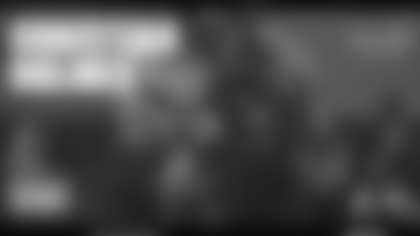The Seattle Seahawks are not the only NFL team with ties to the state of Washington. You can pencil in the Redskins, too.
Many players who have gone to college there have ended up with the Redskins. The most famous one of the modern era is quarterback Mark Rypien, who played for Washington State. He posted dazzling passing stats in D.C. (1987-93) and was MVP of the Redskins' win in Super Bowl XXVI.
Ed Simmons, a "Hog" on that Super Bowl team and a Redskin for 11 seasons (1987-97), went to Eastern Washington. LaVern "Torgy" Torgeson, a great player at Washington State, was a Redskins linebacker (1955-57) and an assistant coach for more than two decades, including the entire Joe Gibbs-1 glory era.
Those are strong connections. But the ties between the Redskins and the state in the Pacific Northwest are much broader.
In fact, they surfaced in the team's formative years.
The franchise, which was born in 1932, played its first five seasons in Boston before moving to the nation's capital in 1937 (it was known as the Boston Braves in 1932 and became the Boston Redskins in 1933). By 1939, Ray Flaherty, then in his fourth year as Redskins coach, had an idea about where to hold training camp.

Flaherty, who played his college ball at Gonzaga in Spokane, Wash., and later coached the Bulldogs, knew of the advantages of playing football in the cool environment of Washington state.
In what may have been the first coast-to-coast training trip by an NFL team, he instructed his squad to leave the hot, humid D.C. area in the summer of 1939 for camp more than 3,000 miles west at a site that is now Eastern Washington University near Spokane. He was confident that the more comfortable climate 2,000 feet above sea level would prevent his players from being in poor physical condition, which he'd blamed for their inability to beat the Giants for the Eastern Division title in 1938.
"I don't believe that will happen this year," Flaherty said. "We're in much better shape for this campaign than we were last year."
The Redskins were well received in training camp. Chief Black Spirit from the Spokane Tribe visited practices and gave Redskins All-Pro Turk Edwards, one of the NFL's first great two-way linemen and a Hall of Fame inductee in 1969, the honorary title of "Chief Red Feathers."
"The site was perfect for football training," said Flaherty, who arranged to hold camp at Gonzaga the following year. "I don't know of any club with which I've been connected that had a more successful training season than the Redskins this year. We didn't have a serious injury, and the players are actually rarin' to go. Last year, they were worn out from the constant heat of Virginia, but it's a different story this year."
Like Flaherty, one of the greatest coaches in Redskins history, Edwards was well acquainted with the Pacific Northwest. An All-American at Washington State, he signed with the Redskins in 1932 and chauffeured a busload of rookies from the state of Washington to training camp in Boston.
For the next decade, that state served as a breeding ground for Redskins players. Dick Farman, a standout guard (1939-43), was one of several who competed at Washington State. Gonzaga produced a series of Redskins when Flaherty was the coach in D.C. in the late-1930s and early-1940s, including George "Automatic" Karamatic and the Hare brothers, Ray and Cecil.
At the time, the Redskins were an NFL powerhouse. They appeared in six championship games from 1936 to 1945, winning twice.
Washington State University also has ties with a coach who is unique in Redskins history. William Henry "Lone Star" Dietz, a part-blooded Sioux who coached the Boston Redskins in 1933 and 1934, was the Cougars' head coach from 1915 to 1917.
The Boston Braves were renamed the Redskins in 1933 in honor of him.
Mike Richman is the author of The Redskins Encyclopedia and the Washington Redskins Football Vault. He hosts a podcast called "Burgundy & Gold Flashback." His web site is redskinshistorian.com. Check out his Facebook Friend and Fan pages and follow him on Twitter.
.
.
.





